
Uniforms & Insignia | Ranks & Organization | Misc. | Contact
Though only in effect for a short time, the changes in U.S. Navy Uniform Regulations during and immediately after World War I had a lasting impact on the navy's corps insignia, and established the basic pattern that is still in use today.
With the U.S. Navy engaged in fighting the First World War, the complaints of inequality that had been voiced for decades by the officers of the staff corps finally came to a head. On August 15, 1918, Secretary of the Navy Josephus Daniels issued the following:
General Order No. 418
August 15 1918
Applicable alike to regulars and reservists, the uniform of any given rank or rating in the Navy shall hereafter be identical in every respect throughout, except for the necessary distinguishing corps devices, and every officer in the Navy shall be designated and addressed by the title of his rank without any discrimination whatever.1
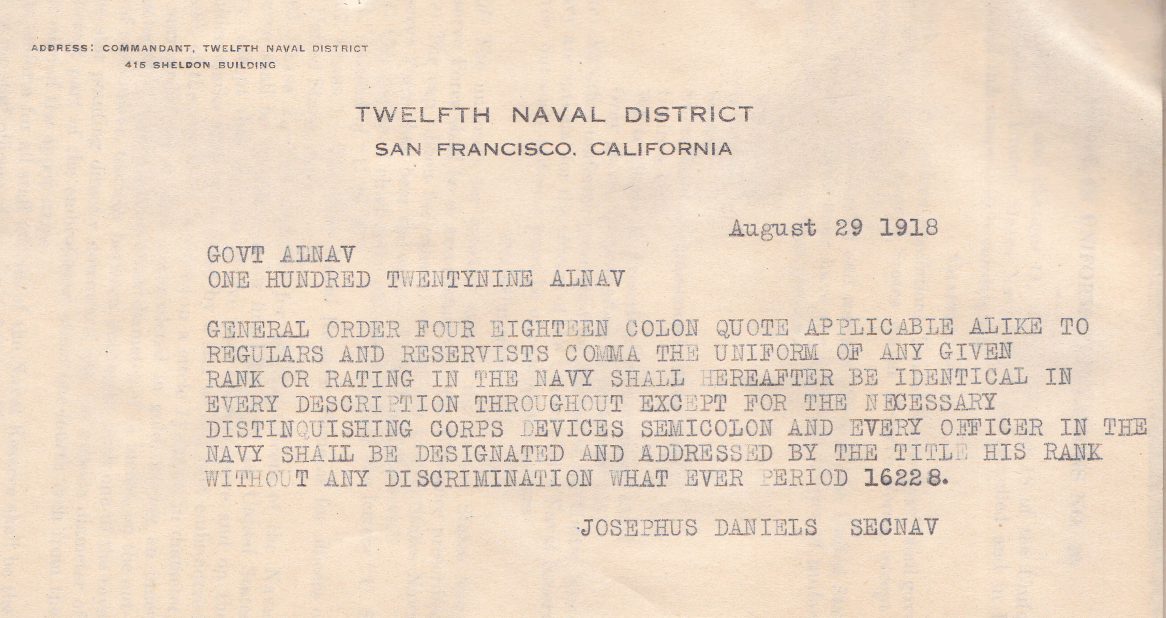
|
| A copy of General Order 418 from the 12th Naval District, San Francisco. Author's collection. |
On November 16, 1918 the first uniform orders to implement the Secretary's directive were issued. Uniform Regulation Change Number 252 made the insignia of staff corps officers more like those of their line officer counterparts. Instead of colored cloth between the rank stripes, corps devices similar to those of the blue service coat collar would be placed above the stripes, in the same position as the star of line officers. On the collar, the line officers' anchor would now be worn by all, with superimposed corps device for staff officers. To contrast with the silver anchor and to correspond with the line star, silver corps devices were changed to gold. The warrant ranks followed the same basic pattern, with those classified as staff officers displaying their corps device on the blue coat sleeves. The orientation of corps devices on the sleeves and shoulder marks was not strictly specified, but period photographs suggest that it was the same as that of the service coat collar. Later, Change Number 27 (see below) specified that the "axis" of corps devices be parallel to the rank stripes, except for naval constructors whose insignia would be placed with the stem downward.
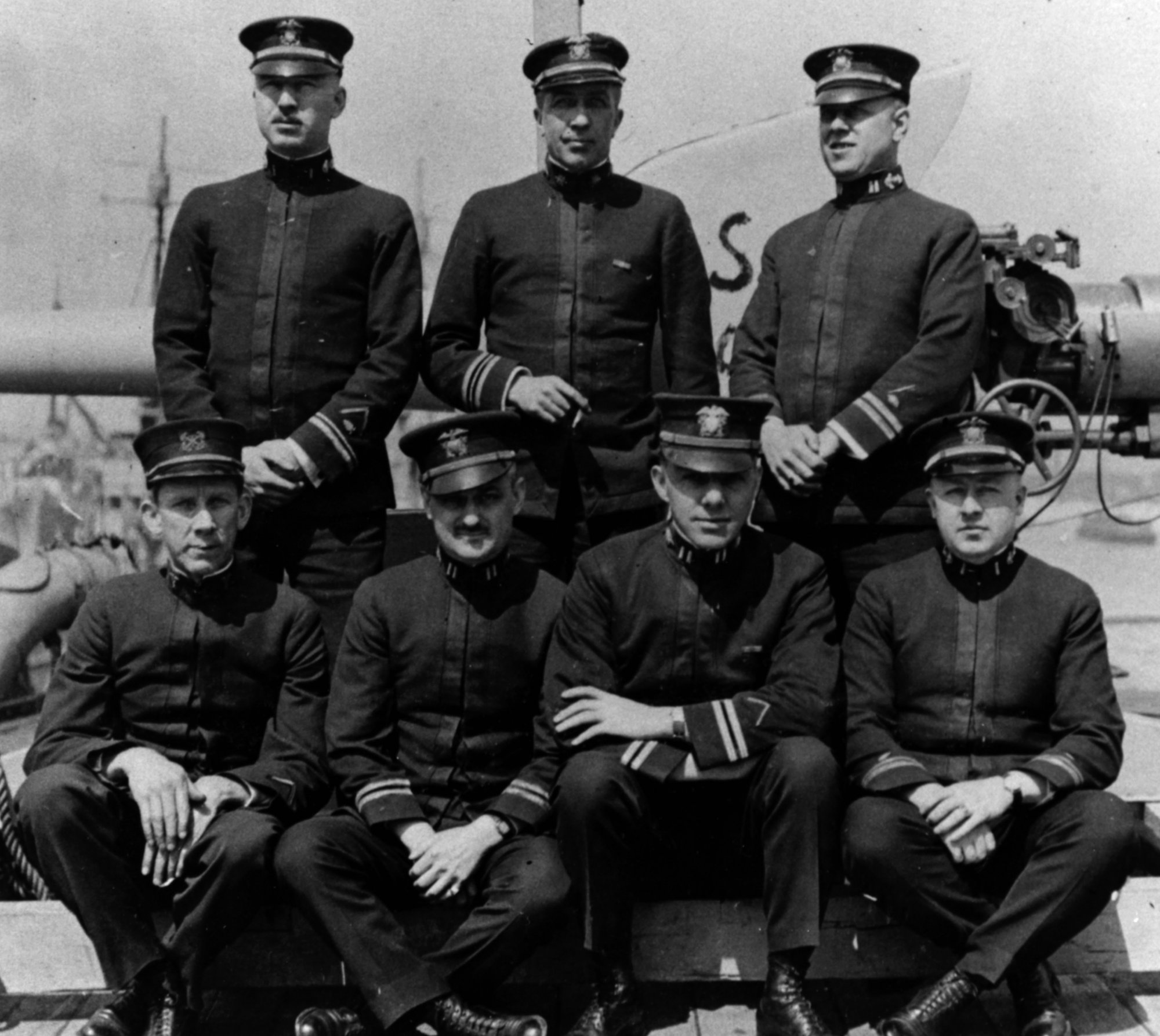
|
| Medical officers of USS Kroonland in March 1919, showing a transitional mix of uniform regulations. Some are wearing colored cloth between their rank stripes, and some are wearing their corps device above the stripes and the anchor on the collar as prescribed in Change No. 25. Photo from the Naval History and Heritage Command, number NH 51001. |
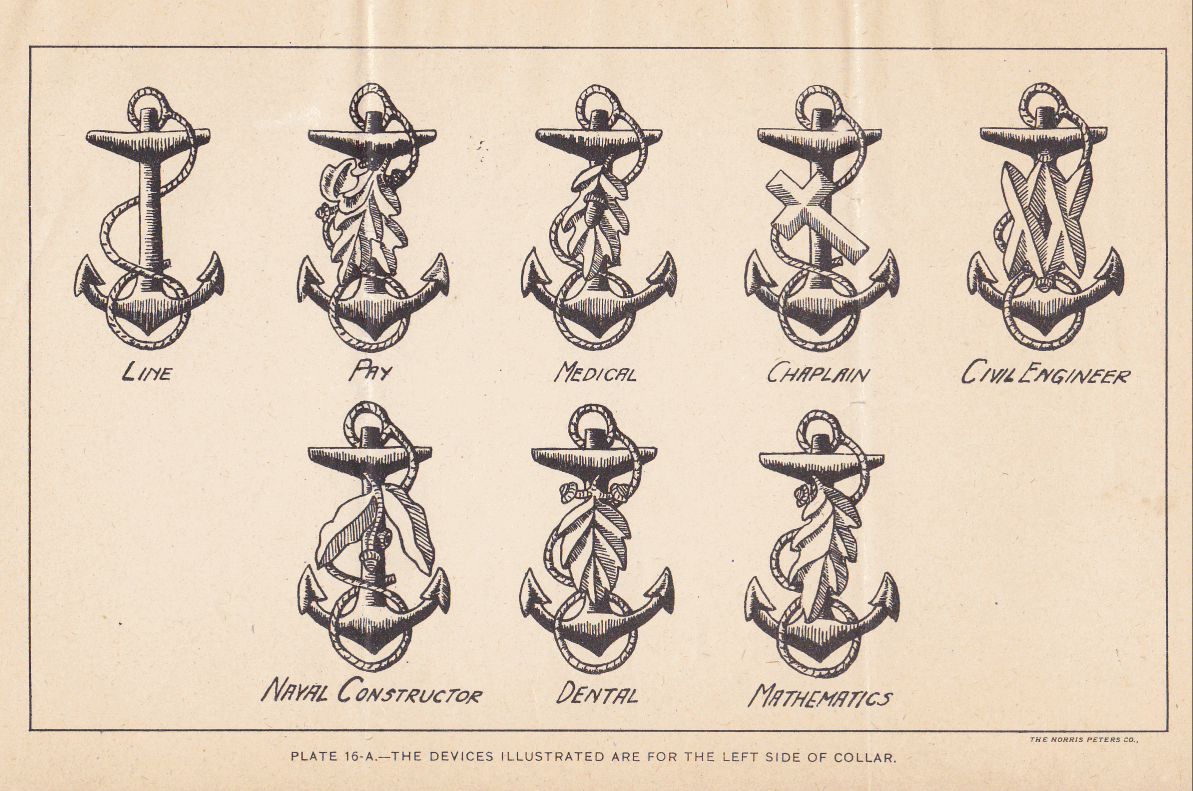
|
| Collar insignia incorporating anchor and corps devices as illustrated in Change No. 25 (click for larger image). Author's collection. |
Uniform Regulations Change Number 27 of March 17, 1919,3 announced the specifications for officers' new service dress blue uniform. Similar to the pattern worn by the British Royal Navy, the double-breasted coat would show rank and corps only on the sleeves, eliminating the collar devices.
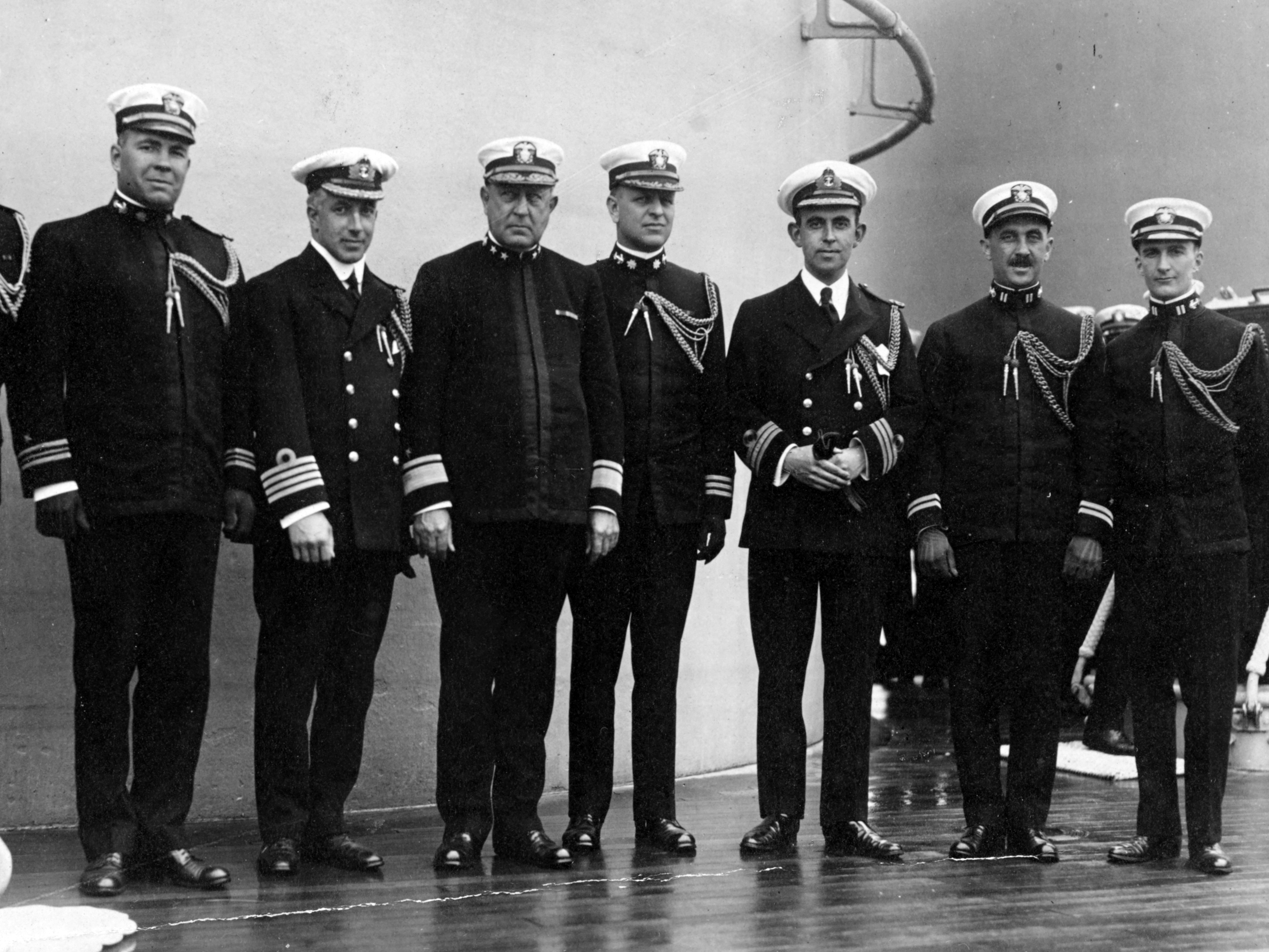
|
|
| US and British naval officers in May 1918, showing the contrast in their standard uniforms. A double breasted, rolling collar coat similar to that worn by the Royal Navy officers, second from left and third from right, would be adopted by the US Navy in March 1919. Photo from the Naval History and Heritage Command, number NH 52739. | |
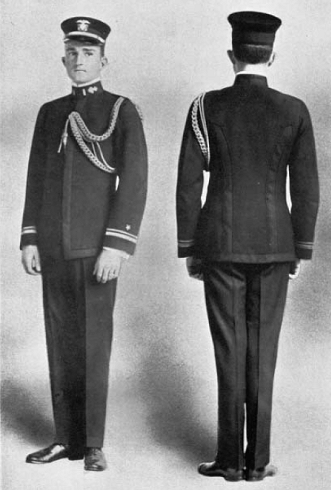
|
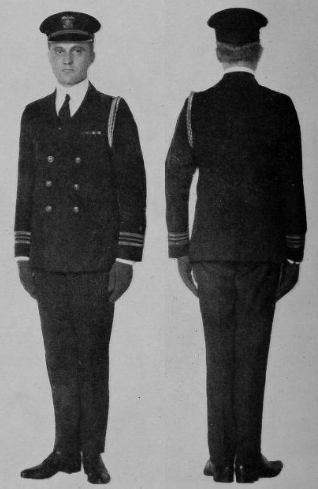
|
| Officer's Service Dress Blue, 1913 Uniform Regulations | Officer's Service Dress Blue, 1922 Uniform Regulations |
As a result of adopting the new uniform, a new order, Change Number 28 of November 13, 1919,4 specified the details of officers' rank and corps insignia. Commissioned officer insignia was largely the same as that of Change 25 the year before, though the orientation of some corps devices was clarified. Commissioned warrant and warrant officers, however, received several modifications. The CWO's gold and blue half-inch stripe was replaced by a plain gold one, and WOs received a narrower quarter-inch gold stripe. The corps device alone would serve to distinguish an ensign from a chief warrant officer. This was similar to Royal Navy practice whereby after October 1918 the same insignia was prescribed for sublieutenants and CWOs.5 As the collar devices would not be available to differentiate the warrant specialties on blue uniforms, line warrant officers began to wear their corps device on the sleeve, in place of the star. Abolition of the collar insignia also eliminated the need for silver CWO corps devices, though they would reappear in 1941 as shirt collar insignia.
Change Number 28 applied to the new-pattern uniform but was optional for the old one; insignia on the old service dress coat, in its wear-out period, continued to fall under Change 25. The final date of the old service uniform was extended a couple of times, but was eventually set at June 30, 1922.
When a new edition of Uniform Regulations was published in 1922,6 a few more modifications were made. The Civil Engineer Corps device was changed in design and added silver acorns. Warrant and commissioned warrant officers returned to gold and blue broken rank stripes. The contrasting star, which distinguished line from staff WOs and CWOs, was removed from their corps devices; evidently the design of the corps device itself was deemed sufficient to identify a line officer. This pattern of officer rank and corps insignia remained essentially unchanged until after the Korean War.
commissioned staff corps officers |
commissioned |
warrant |
line |
staff |
line |
staff |
|
Medical Director with rank of Rear Admiral |
Pay Director with rank of Captain |
Chaplain with rank of Commander |
Naval Constructor with rank of Lieutenant Commander |
Professor of Mathematics with rank of Lieutenant |
Assistant Dental Surgeon with rank of Lieutenant, junior grade |
Assistant Civil Engineer with rank of Ensign |
Chief |
Chief |
Gunner |
Pharmacist |
Uniform Regulations |
Rear Admiral, |
Captain, |
Commander, |
Lieutenant Commander, |
Lieutenant, |
Lieutenant, junior grade, |
Ensign, |
Chief |
Chief |
Gunner |
Pharmacist |
Uniform Regulations |
Rear Admiral, |
Captain, |
Commander, |
Lieutenant Commander, |
Lieutenant, |
Lieutenant, junior grade, |
Ensign, |
Chief |
Chief |
Gunner |
Pharmacist |
USN Uniform Regulations, |
Rear Admiral, |
Captain, |
Commander, |
Lieutenant Commander, |
Lieutenant, |
Lieutenant, junior grade, |
Ensign, |
Chief |
Chief |
Gunner |
Pharmacist |
Text and illustrations © 2013-2014, Justin T. Broderick. Photographs of uniforms from public domain government publications.
Page last modified: April 17, 2014